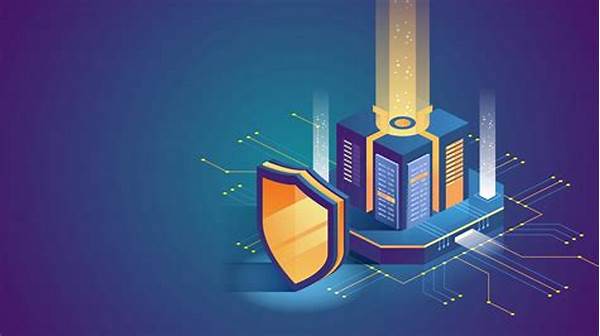In the ever-evolving landscape of software development, ensuring the security of applications is of paramount importance. Secure coding and vulnerability management have emerged as critical disciplines to protect systems from threats and mitigate risks associated with software vulnerabilities. As organizations increasingly rely on digital solutions, the need for robust security measures has intensified. In this article, we delve into the intricacies of these crucial practices, examining their significance and methodologies for effective implementation.
Read Now : Digital Fashion Innovation Training
The Imperative of Secure Coding
Secure coding is the practice of developing software with the intent to minimize security flaws and prevent vulnerabilities from being introduced. It involves adhering to established coding standards and employing practices that significantly reduce the risk of malicious attacks. Emphasizing secure coding from the onset of the development lifecycle ensures that security is ingrained into the software architecture, rather than appended as an afterthought. Effective secure coding requires a comprehensive understanding of potential threats and the application of best practices to mitigate them. Concurrently, vulnerability management involves the systematic identification, assessment, and remediation of security weaknesses within software systems. These two components work in tandem, ensuring that software not only meets functionality requirements but is also resilient against unauthorized access and exploitation.
Best Practices for Secure Coding and Vulnerability Management
1. Code Review: Incorporating code reviews in the software development process is essential for promoting secure coding. By scrutinizing code for potential vulnerabilities, developers can preempt security issues.
2. Automated Testing: Utilizing automated testing tools helps in consistently identifying vulnerabilities that may not be evident through manual inspection. This process augments secure coding practices by providing an additional layer of verification.
3. Continuous Education: Keeping developers informed and educated about the latest security practices and emerging threats is vital. Continuous learning ensures that secure coding remains a priority.
4. Patch Management: Timely application of patches is a key component of vulnerability management. It involves regularly updating software to address newly discovered vulnerabilities.
5. Risk Assessment: Conducting regular risk assessments allows organizations to prioritize vulnerabilities and allocate resources efficiently for remediation efforts.
Read Now : Startup Grants For Technology Projects
Implementing Secure Coding in Organizations
The integration of secure coding practices within an organization requires a strategic approach. Initially, organizations must cultivate a culture of security awareness among developers and stakeholders. This may involve structured training programs, workshops, and the establishment of a security-first mentality. Collaboration between development and security teams is crucial, as it ensures that secure coding principles are aligned with business objectives and compliance requirements. Furthermore, deploying tools that automate vulnerability scanning and secure coding assessments can facilitate the practical implementation of these practices. By fostering an environment that prioritizes secure coding and vulnerability management, organizations can enhance their resilience against cyber threats.
The Role of Secure Coding Standards
Secure coding standards serve as guidelines to ensure that code is written with security in mind. Adherence to these standards is critical in preventing vulnerabilities that could be exploited by malicious actors. Secure coding standards outline recommendations for writing safe, robust code and encompass various aspects such as input validation, error handling, and resource management. By internalizing these standards, developers can significantly reduce the potential for security breaches. The integration of secure coding standards within the software development lifecycle is a proactive measure that fortifies applications against known and emerging threats.
Challenges in Secure Coding and Vulnerability Management
Despite the acknowledged importance of secure coding and vulnerability management, various challenges impede their effective implementation. One primary obstacle is the fast-paced nature of software development, which often prioritizes delivery speed over thorough security analysis. Moreover, the constantly evolving threat landscape means that secure coding practices and vulnerability management strategies must be regularly updated to remain effective. Resource constraints, both in terms of time and expertise, also pose significant challenges. Organizations must allocate sufficient resources to foster secure coding practices, conduct comprehensive vulnerability assessments, and deploy patches promptly. Overcoming these challenges requires a commitment to integrating security as a core component of software development, ensuring that secure coding and vulnerability management are continuous, iterative processes.
Summary
In conclusion, secure coding and vulnerability management are indispensable components of modern software development. These disciplines ensure that systems are safeguarded against malicious attacks and align software creation with the highest security standards. Secure coding integrates best practices and standards into the development process, while vulnerability management maintains the ongoing security posture through assessment and remediation of weaknesses. Ultimately, by prioritizing these practices, organizations not only protect their digital assets but also establish trust with users who rely on secure applications. It is imperative that organizations remain vigilant, continually adapting to the dynamic threat environment to uphold the integrity and security of their software systems.
